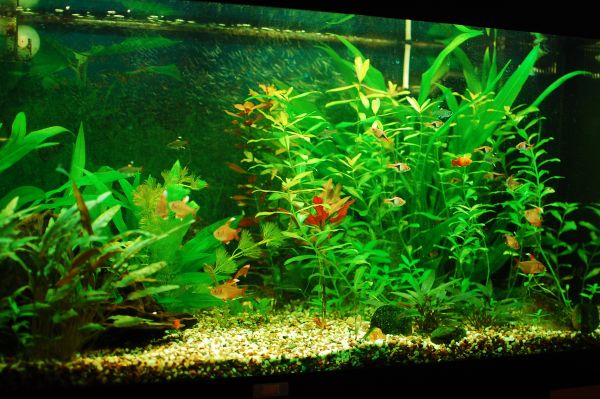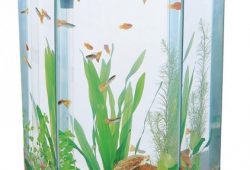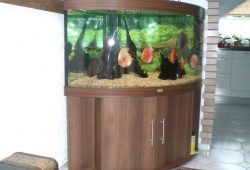Getting Your Freshwater Aquarium Set Up
The following article is devoted to Getting Your Freshwater Aquarium Set Up. You’re all ready, now it’s time to get your freshwater aquarium set up. This is the interesting part and time to decide what’s going into your fish tank. Luckily you have a variety of options. However, like most things, time spent planning now will pay dividends long-term so you should take the time to gather information and educate yourself about your choices. This will form the basis of your freshwater aquarium setup.

Contents
Substrate
Sometimes referred to as gravel, substrate is what’s located on the bottom of the freshwater aquarium. It is a vital part of your set up and contributes to the overall effect of the tank environment.
Small Scale Substrate
If you choose a small substrate for your freshwater aquarium setup, some tropical fish will appreciate this more than others as, when they are breeding; it becomes a more suitable nesting material. This is due to the fact that they prefer something that it easy for them to manipulate.
Examples of popular small scale substrate are tiny pebbles and sand. These materials are inexpensive and work well in the tank.
Be aware that substrate that is on the small side, such as sand, can cause irritation to the mouth of the fish. This is due to the fact that some fish will pick up the substrate material and move it around by using their mouths. In addition’ sand can cause abrasion to both acrylic and glass surfaces as they are moved, so be aware!
Medium Scale Substrate
This is probably the most commonly used substrate as it’s of average size and includes slightly larger pebbles and rock. Many people choose this size of material with effective results.
Large Scale Substrate
This is not a popular choice in a freshwater aquarium set up. This size of substrate includes things such as river rock. However, some people have a preference for this as it creates an under water feature within the tank. A problem associated with this arrangement is that all kinds of food particles and other debris can sink and become trapped in between the rocks. This can cause the water to become discoloured and polluted which may cause the fish to suffer.
The Relationship Between the Substrate You Choose and Your Fish
Be aware that certain kinds of substrate materials can affect the water and also your fish. Some materials can actually affect the pH levels of the water. Make sure you carefully consider the materials that you place in the tank as part of your freshwater aquarium setup.
Avoid These Types of Substrate
You will want to avoid all types of substrate material that could negatively affect the water in your tank. The following is a list of some of the materials to avoid using for substrate: onyx, lava rock, slate, dolomite, geodes, limestone, shells, granite, quartz and sandstone.
Always test out anything that you intend to put in your tank, particularly if it hasn’t been bought from a pet store and suitable for fish aquariums. There are two common methods for testing these types of substrate when you are unsure if they should actually be put in the water with your fish.
The first type of test is to use vinegar. Use a dropper to place some vinegar on any gravel, rocks, stones or pebbles that you would like to use in the tank. If there is a reaction between the vinegar and the rocks such as foaming or fizzing, then the material has calcium content and it’s not suitable for the water.
Another option is to put any substrate you are considering using into a bucket of water, and test the hardness and pH levels. Wait about a week, and then test it again. If the levels are still acceptable, then you should be okay to use it as part of your freshwater aquarium set up.
Types of Testing
Many different types of testing kits are available for purchase. You will need to determine which one is the most suitable for your use.
Improper pH levels can cause fish stress and eventual death, so it’s essential to have a good pH test kit.
High or elevated levels of ammonia can be a cause for concern. The only time you should see an elevated level is at start-up. However, certain conditions such as contaminated water, dirty filters and/or medication can result in high ammonia levels.
You can test for Nitrite which should be at a level of less than 1.0.
You can also test for Nitrate which should be no more than three hundred parts per million.
Other Considerations for Your Freshwater Aquarium Setup
There are various types of filters and filtration systems, pumps, heaters, chillers and of course lighting for your fish tank which will be discussed in additional articles within this site.
To ensure safe use of all these accessories it is essential to invest in a good quality electrical power adaptor strip that is waterproof, and can accommodate the number of plugs that you will need for your freshwater aquarium set up.



